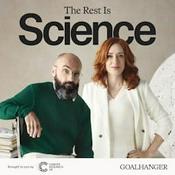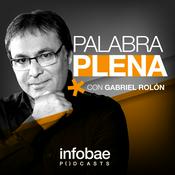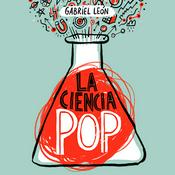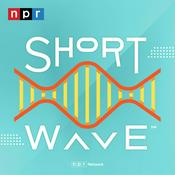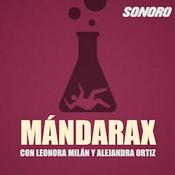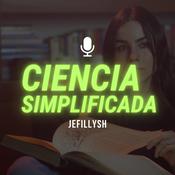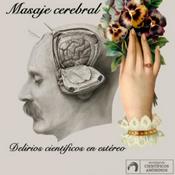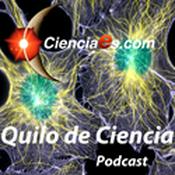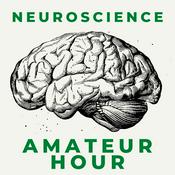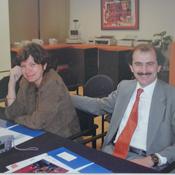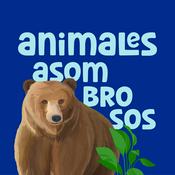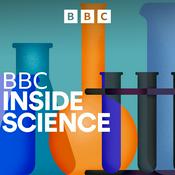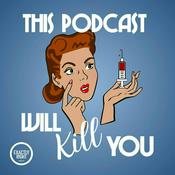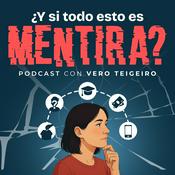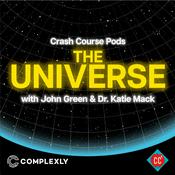375 episodios

How do scissors curl ribbon?
25/12/2025 | 44 min
#228 In this festive episode, Melissa and Jam delve into the fascinating science behind why ribbons curl when pressed against a blade. The discussion covers polymers, their molecular structures, and the forces at play during this process. With a blend of personal holiday memories and a detailed analogy involving crocheted yarn, the duo makes complex chemistry accessible and fun for all listeners. They also share their favorite holiday traditions and movies, making this episode a blend of heartwarming stories and educational content. 00:00 Guess the Sound Game 01:37 Introducing the Topic: Curly Ribbon Science 03:51 Chemistry Behind Curly Ribbon 04:20 Polymers and Their Properties 05:59 Crochet Analogy for Polymers 12:23 Molecular Mechanics of Ribbon Curling 15:34 Practical Tips for Perfect Ribbon Curls 19:36 Holiday Reflections and Chemistry Recap 22:37 Understanding Polymer Behavior 24:28 Molecular Forces and Rearrangement 28:02 Holiday Traditions and Memories 36:33 Favorite Christmas Movies 40:37 Wrapping Up and Listener Shoutouts Support this podcast on Patreon Buy Podcast Merch and Apparel Check out our website at chemforyourlife.com Watch our episodes on YouTube Find us on Instagram, Twitter, and Facebook @ChemForYourLife References from the Episode: https://books.byui.edu/plastics_materials_a/plastic_high_strain_#:~:text=The%20molecular%20interpretation%20(in%20polymers,rupture%20and%20the%20sample%20breaks. https://pubs.acs.org/doi/10.1021/acs.macromol.0c02076https://www.bbc.com/news/science-environment-35809116.amp https://www.pnas.org/doi/10.1073/pnas.1514626113 https://pubs.acs.org/doi/10.1021/ba-1993-0233.ch005 https://courses.ems.psu.edu/matse81/node/2109 Thanks to our monthly supporters Amanda Raymond Emily Morrison Kyle McCray Justine Emily Hardy Ash Vince W Julie S. Heather Ragusa Autoclave Dorien VD Scott Beyer Jessie Reder J0HNTR0Y Jeannette Napoleon Cullyn R Erica Bee Elizabeth P Rachel Reina Letila Katrina Barnum-Huckins Suzanne Phillips Venus Rebholz Jacob Taber Brian Kimball Kristina Gotfredsen Timothy Parker Steven Boyles Chris Skupien Chelsea B Avishai Barnoy Hunter Reardon Support this podcast on Patreon Buy Podcast Merch and Apparel Check out our website at chemforyourlife.com Watch our episodes on YouTube Find us on Instagram, Twitter, and Facebook @ChemForYourLife Hosted by Simplecast, an AdsWizz company. See pcm.adswizz.com for information about our collection and use of personal data for advertising.

What makes firecrackers go pop?
18/12/2025 | 46 min
#227 Melissa and Jam delve into the chemistry behind firecrackers and Christmas crackers. They discuss the key component, silver fulminate, explaining its unstable nature and how it reacts to create the explosive effects. The discussion also touches on the octet rule, formal charges, and isomers. Along with sharing personal experiences and pranks involving firecrackers, they also recount historical debates between chemists over the discovery of isomers and their eventual agreement. The episode highlights the importance of chemistry in understanding everyday phenomena and ensuring safety. 00:00 Introduction and Firecracker Anecdotes 00:58 Chemistry of Firecrackers 04:53 Explosive Chemistry Explained 19:55 Historical Discoveries and Isomers 24:20 The Origins of a Scientific Discovery 24:48 Friendship and Scientific Collaboration 25:24 Understanding Isotopes and Isomers 27:20 Chemistry Behind Christmas Crackers 30:26 Fireworks and Safety Concerns 35:52 Fire Alarms and Home Safety 42:33 Supporting the Show and Community Shoutouts Support this podcast on Patreon Buy Podcast Merch and Apparel Check out our website at chemforyourlife.com Watch our episodes on YouTube Find us on Instagram, Twitter, and Facebook @ChemForYourLife References from the Episode: Thanks to our monthly supporters Amanda Raymond Emily Morrison Kyle McCray Justine Emily Hardy Ash Vince W Julie S. Heather Ragusa Autoclave Dorien VD Scott Beyer Jessie Reder J0HNTR0Y Jeannette Napoleon Cullyn R Erica Bee Elizabeth P Rachel Reina Letila Katrina Barnum-Huckins Suzanne Phillips Venus Rebholz Jacob Taber Brian Kimball Kristina Gotfredsen Timothy Parker Steven Boyles Chris Skupien Chelsea B Avishai Barnoy Hunter Reardon Support this podcast on Patreon Buy Podcast Merch and Apparel Check out our website at chemforyourlife.com Watch our episodes on YouTube Find us on Instagram, Twitter, and Facebook @ChemForYourLife Hosted by Simplecast, an AdsWizz company. See pcm.adswizz.com for information about our collection and use of personal data for advertising.

Ask a Chemist: Should I be worried about Cast Iron? (and other questions)
11/12/2025 | 34 min
Ask a Chemist #73 Melissa and Jam tackle a range of listener questions covering a wide array of chemistry-related topics. They discuss the properties of polymers found in diapers, the science behind bubbles, the controversy surrounding cast iron vs. Teflon cookware, and the fascinating world of superconducting magnets. The episode also underscores the importance of ventilating your kitchen, the peculiarities of cling film, and the quirks of silicone products. Along the way, Melissa shares personal anecdotes, and they even address some humorous and intriguing comments from listeners. Tune in for a mix of chemistry insights and light-hearted banter. 00:00 Introduction and Funny Classroom Anecdote 01:44 Chemistry for Your Life Podcast Introduction 04:17 Listener Questions: Diapers and Polymers 07:30 Listener Questions: The Science of Bubbles 10:05 Listener Questions: Balloons and Static Electricity 12:11 Listener Questions: Cast Iron and Teflon 14:45 Listener Questions: Chapstick and Moisturizers 15:48 Nostalgic Memories and Copyright Concerns 16:23 Sweater Talk and Community References 16:57 Superconducting Magnets Explained 18:46 Cling Film Mysteries and Silicone Solutions 22:13 Silicone and Broth Storage Solutions 26:11 Listener Comments and Feedback 31:40 Wrapping Up and Community Shoutouts Support this podcast on Patreon Buy Podcast Merch and Apparel Check out our website at chemforyourlife.com Watch our episodes on YouTube Find us on Instagram, Twitter, and Facebook @ChemForYourLife References from the Episode: Thanks to our monthly supporters Amanda Raymond Emily Morrison Kyle McCray Justine Emily Hardy Ash Vince W Julie S. Heather Ragusa Autoclave Dorien VD Scott Beyer Jessie Reder J0HNTR0Y Jeannette Napoleon Cullyn R Erica Bee Elizabeth P Rachel Reina Letila Katrina Barnum-Huckins Suzanne Phillips Venus Rebholz Jacob Taber Brian Kimball Kristina Gotfredsen Timothy Parker Steven Boyles Chris Skupien Chelsea B Avishai Barnoy Hunter Reardon Support this podcast on Patreon Buy Podcast Merch and Apparel Check out our website at chemforyourlife.com Watch our episodes on YouTube Find us on Instagram, Twitter, and Facebook @ChemForYourLife Hosted by Simplecast, an AdsWizz company. See pcm.adswizz.com for information about our collection and use of personal data for advertising.

How do X-Rays reveal what's hidden inside us?
04/12/2025 | 43 min
#226 Melissa and Jam delve into the intriguing world of X-rays. They start with relatable stories from the dentist's office and transition into a deep dive into how X-rays work. Key topics include the electromagnetic spectrum, how X-rays are generated, why some materials allow X-rays to pass through while others don't, and the potential risks associated with repeated exposure. They also share personal anecdotes about broken bones and medical X-ray experiences, as well as shout out to community members who support the show. Join Melissa and Jam as they unravel the chemistry behind X-rays and their impact on our daily lives. 00:00 A Trip to the Dentist 01:00 Shoutouts and Inspirations 01:32 Introduction to X-Rays 04:04 Understanding the Electromagnetic Spectrum 05:38 How X-Rays Work 09:40 The Science Behind X-Ray Imaging 14:52 Generating X-Rays 17:23 Energy Waves and Electrons 19:57 Understanding X-rays and Their Risks 20:55 Comparing X-ray Exposure to Sunlight 21:35 Family Concerns About X-rays 22:33 Technological Advances in X-ray Safety 22:49 Summarizing X-ray Risks and Benefits 26:31 Personal Stories of X-rays and Broken Bones 39:26 Supporting the Show and Community Support this podcast on Patreon Buy Podcast Merch and Apparel Check out our website at chemforyourlife.com Watch our episodes on YouTube Find us on Instagram, Twitter, and Facebook @ChemForYourLife References from the Episode: Thanks to our monthly supporters Amanda Raymond Emily Morrison Kyle McCray Justine Emily Hardy Ash Vince W Julie S. Heather Ragusa Autoclave Dorien VD Scott Beyer Jessie Reder J0HNTR0Y Jeannette Napoleon Cullyn R Erica Bee Elizabeth P Rachel Reina Letila Katrina Barnum-Huckins Suzanne Phillips Venus Rebholz Jacob Taber Brian Kimball Kristina Gotfredsen Timothy Parker Steven Boyles Chris Skupien Chelsea B Avishai Barnoy Hunter Reardon Support this podcast on Patreon Buy Podcast Merch and Apparel Check out our website at chemforyourlife.com Watch our episodes on YouTube Find us on Instagram, Twitter, and Facebook @ChemForYourLife Hosted by Simplecast, an AdsWizz company. See pcm.adswizz.com for information about our collection and use of personal data for advertising.

What's up with aluminum foil?
27/11/2025 | 30 min
#018 Rebroadcast This week Melissa and Jam explore the chemistry of aluminum foil. Why doesn’t it feel hot when we take it out of the oven? How does it cool down so quickly? We harken back to a previous episode about specific heat a few times in this episode, listen to that one by clicking here. Support this podcast on Patreon Buy Podcast Merch and Apparel Check out our website at chemforyourlife.com Watch our episodes on YouTube Find us on Instagram, Twitter, and Facebook @ChemForYourLife References from this episode http://scienceline.ucsb.edu/getkey.php?key=703 Dr. Weber PhD in Physical Chemistry, University of North Texas Chemistry, Edition 1 - Julia Burdge Melissa's Previous Knowledge Thanks to our monthly supporters Amanda Raymond Emily Morrison Kyle McCray Justine Emily Hardy Ash Vince W Julie S. Heather Ragusa Autoclave Chelsea Morelos Dorien VD Scott Beyer Jessie Reder J0HNTR0Y Jeannette Napoleon Cullyn R Erica Bee Elizabeth P Rachel Reina Letila Katrina Barnum-Huckins Suzanne Phillips Venus Rebholz Jacob Taber Brian Kimball Kristina Gotfredsen Timothy Parker Steven Boyles Chris Skupien Chelsea B Avishai Barnoy Hunter Reardon Support this podcast on Patreon Buy Podcast Merch and Apparel Check out our website at chemforyourlife.com Watch our episodes on YouTube Find us on Instagram, Twitter, and Facebook @ChemForYourLife Hosted by Simplecast, an AdsWizz company. See pcm.adswizz.com for information about our collection and use of personal data for advertising.
Más podcasts de Ciencias
Podcasts a la moda de Ciencias
Acerca de Chemistry For Your Life
Escucha Chemistry For Your Life, StarTalk Radio y muchos más podcasts de todo el mundo con la aplicación de radio.net

Descarga la app gratuita: radio.net
- Añadir radios y podcasts a favoritos
- Transmisión por Wi-Fi y Bluetooth
- Carplay & Android Auto compatible
- Muchas otras funciones de la app
Descarga la app gratuita: radio.net
- Añadir radios y podcasts a favoritos
- Transmisión por Wi-Fi y Bluetooth
- Carplay & Android Auto compatible
- Muchas otras funciones de la app


Chemistry For Your Life
Descarga la app,
Escucha.


